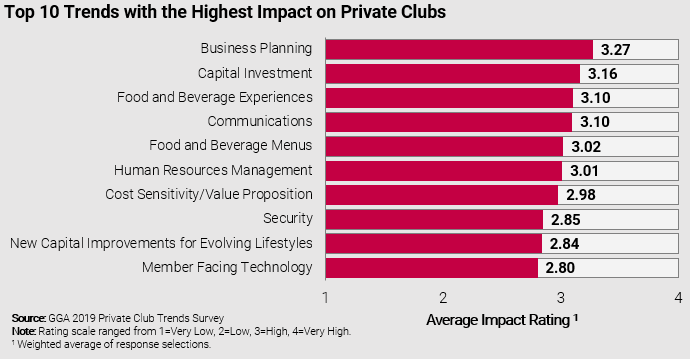The inimitable Elvis Presley’s version of Hound Dog sold 10 million copies and holds the 19th spot on Rolling Stone’s list of 500 Best Songs of All Time. But the King of Rock ‘N’ Roll can’t claim Hound Dog entirely as his own. Elvis was covering a version recorded three years earlier by Willie Mae “Big Mama” Thornton, an American rhythm and blues singer and songwriter.
Elvis has been accused of stealing or culturally appropriating Hound Dog. But the truth is that covering was even more popular in his day than now. The more important takeaway is that we should always be paying attention to the past, learning from others and developing our own plans for success. There are three distinct plans that club leaders should have within easy reach at all times.
Strategic Plan
A strategic plan should clarify two aspects of purpose: what we are and what do we intend to accomplish. An effective strategic plan builds on the knowledge of past experience and market understanding to describe the club’s goals and objectives.
All businesses benefit greatly from the discipline and clarity provided by sound strategy. Although many golf facilities lack formalized strategy, those that actively use their strategic plans hold a distinct competitive advantage. According to research completed by Global Golf Advisors, 73 percent of clubs that rely on a strategic plan to guide their operations outperform their competition.
Marketing Communications Plan
Most golf courses and private clubs do business in markets that are extremely oversupplied. Further, many of these facilities lack a current and actionable understanding of the people who are their customers, members and prospects. In highly competitive and crowded markets, the advantage goes to those who know whom they are looking for, where to find them and how to communicate with them effectively.
Effective and purposeful communication plans are target specific. Knowing how to communicate with your baby boomer audience is different than reaching millennials, for example. The best communications plans utilize multiple media and reinforce messaging on a disciplined schedule.
Most people find time only for trusted information sources. Thus, golf courses and private clubs have the advantage in most cases of being “known” to their active market segments. What tactics are working best?
- Robust and engaging websites are the platform for any communications plan today. They must be inviting, engaging and functional.
- Print communications – newsletters and postcards, for example – are sticky with many golfers, especially those over 50, and should not be disregarded even in a digital age.
- Engaging social media help create conversations within your community of members and prospects.
- Video that shows images of people enjoying the golf course and clubhouse activities help tell the club’s stories in authentic ways.
- Person-to-person contact from key staff members remains a difference-maker. There is no substitute for a personal invitation.
Staffing Plan
Access to affordable labor is one of the most important operational challenges at most golf clubs. With labor costs now exceeding 55 percent of most clubs’ operational expenses, thoughtful planning is essential. Borrowing ideas from the past enables managers to create meaningful relationships with employees and keep them committed to their jobs. What’s more, clubs that encourage their best employees to recruit friends and relatives have an advantage in attracting top talent.
A reliable staffing plan identifies the utilization flow of the facility to ensure that the club is properly staffed at all times. The plan must calculate labor and payroll burden costs to enable dependable budget projections. The best staffing plans show the position title and description, number of employees required, allotted compensation and benefits, and options for flexing staff size and positions as conditions change.
Big Mama Thornton inspired Elvis to lay claim as the King of Rock ‘N’ Roll. Who’s your inspiration, and what’s your plan for success?
This article was authored by GGA Partner Henry DeLozier for Golf Course Industry Magazine.











